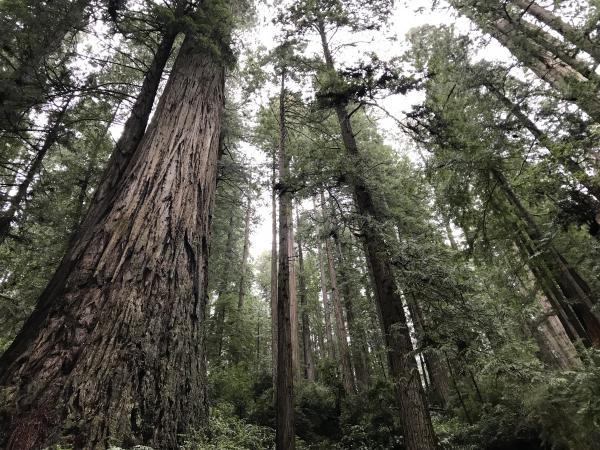This is the fourth installment of our Q&A with Art + Technology Lab grant recipient Julia Christensen. Over the past year, Julia has collaborated with a group of scientists at NASA’s Jet Propulsion Laboratory (JPL) on a project that has evolved into a mission to design and implement a 200-year satellite that will communicates with trees on Earth. The project is called The Tree of Life.
Can you describe recent updates with the Tree of Life mission that you are designing with JPL scientists?
The Tree of Life team held several A-Team meetings at JPL during the spring and summer of 2019, which were very productive. Our studies confirmed the potential of our concept to design and implement a 200-year operational CubeSat in low-Earth orbit. The CubeSat will send data about its operational “health” back and forth with a series of live trees around our planet, which will also be transmitting data about their health (i.e., their responses to light and water). We were lucky to have intern Ingie Bahoe (NYU, Abu Dhabi) at JPL this summer to work with our team’s telecommunications engineer, Dr. Alessandra Babuscia. Ingie built models that harness the dielectric properties of live trees to turn them into living, organic antennae that will send and receive data sets with our orbiting CubeSat, using a radio frequency.
All of the science is, theoretically, checking out, and our enthusiasm just keeps growing. It looks like it is indeed possible to build a 200-year spacecraft—transcending our current cycles of technological obsolescence—while also building a communication system here on Earth that incorporates “technology” that will never obsolesce—trees. And no, we won’t harm the trees! In fact, we feel that including the trees as a fundamental part of this system emphasizes the essential need to take good care of our own planet, even as we explore outer space. Our descendants will have to commit to keeping the trees alive, after they inherit The Tree of Life.
You spent your summer in Pasadena furthering the project. Would you tell us a little about what you did during your time in California?
I was recently awarded support from the Fulcrum Arts, a non-profit arts organization in Pasadena that operates at the intersection of art and science. Fulcrum provided additional support for The Tree of Life through their A x S Incubator program, which included funding for an extended stay in Pasadena to continue work with my collaborators at JPL, and access to office space while I was in town.
Fulcrum Arts also connected me with Tom Hall, a musician and programmer for Cycling ’74, the company that makes the software, Max/MSP. Tom and I are developing custom software (using Max) that translates the CubeSat/tree data sets into sonic frequencies. In other words, we are using various parameters to turn the data sets into songs, so that effectively, the trees and CubeSat will sing to each other for 200 years. Tom is a stellar coder, so it has been really fun working with him on this portion of the project.
By the end of the summer, we presented functioning prototypes of our “singing” trees to the A-team. We use sensors to collect data about the plants’ responses to light and water, and that data is sonified into a sin wave that varies depending on the plants’ reactions to stimuli. It is really amazing to witness the singing plants. This is the song that eventually, we can inscribe on the surface of our interstellar spacecraft, telling a story about “life on Earth,” much like the Voyagers’ Golden Record—but this time, the story is told by Earth’s trees, and our spaceborne technology.
What are the next steps for the project?
We plan to implement our first tree/antenna prototype in the coming months at JPL. Our first step will be to receive a ping at our tree from a CubeSat that is currently in orbit, and then we can begin to design a reproducible tree/antenna schematic.
In a couple of months, we will definitely have more news to share. I’ll keep you posted!
The Art + Technology Lab is presented by

The Art + Technology Lab is made possible by Accenture and Snap Inc.
Additional support is provided by SpaceX and Google.
The Lab is part of The Hyundai Project: Art + Technology at LACMA, a joint initiative exploring the convergence of art and technology.
Seed funding for the development of the Art + Technology Lab was provided by the Los Angeles County Quality and Productivity Commission through the Productivity Investment Fund and LACMA Trustee David Bohnett.



